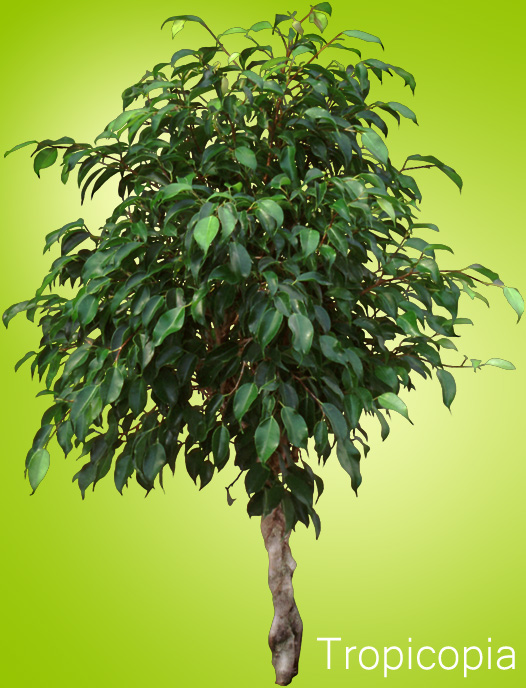





Ficus Benjamina Trees have the reputation of being temperamental high-light plants, but today there are new hardy varieties of Ficus Trees that grow in almost any location. The original indoor ficus, Ficus benjamina, lost leaves if you just looked at it. Any fluctuation in light, temperature, or water would cause a hundred leaves to fall off a Ficus benjamina Tree. Now we have hybrids such as the Ficus Midnight and Ficus Monique that adapt well to medium and even low lightWhen you select “Low Light” a list of the most adaptive plants in our database appears. These plants can live in lighting conditions too low to support any other plants in our database, but will grow faster in medium and high light. Variegation (color) in the leaves is often lost in low light. A plant in low light needs less water and fertilizer than the same plant in better light. Place a low-light plant within 2-3 ft. of a window with a northern exposure, 3-5 ft. of a window with an eastern exposure, 4-10 ft. of a window with a western exposure, and 10-18ft. of a window with a southern exposure. A low light area has between 50-150 ft. candles of light. The best low light house plants are: Chinese Evergreen, Dracaena Janet Craig, Peace Lily, Heart leaf Philodendron.; the Ficus Wintergreen Tree that has green and white leaves; and the Ficus Alli or Ficus Amstel that has elongated leathery leaves. All of these Ficus Trees are very forgiving and rarely drop any leaves You can find a ficus tree small enough to sit on a table or as large as 12ft. tall. In the more expensive ficus varieties, the trunks of the tree can be braided or spiral, not just straight.
These plants are considered poisonous and should be kept away from pets and children. Read more about common houseplants that are poisonous in Don’t Feed Me To Your Cat! A Guide to Poisonous Houseplants

Copyright © www.100flowers.win Botanic Garden All Rights Reserved